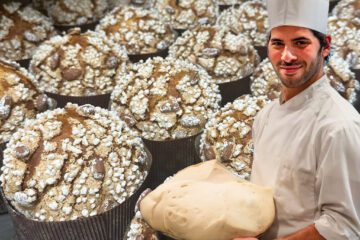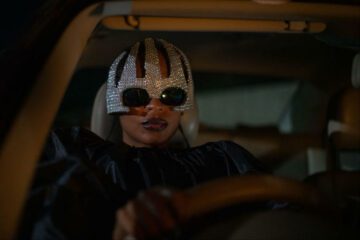Famous SF Artist Known for Mission Graffiti Returns After 27 Years

An old school San Francisco artist has returned to the city for a major gallery exhibition. Barry McGee, well-loved for his graffiti art, has taken over the Berggruen Gallery on Howard Street with his new show Old Mystified. McGee emerged as a Mission School artist and is also known by his handles Twist, Ray Fong, Bernon Vernon, and P.Kin. This marks Barry’s second solo exhibition with Berggruen Gallery; owner John Berggruen is an even more old school San Franciscan himself, starting out with zines in the 70s. The show is on view Friday, September 27 through Thursday, November 7. Fans swarmed outside for the release party. “It feels amazing,” McGee says. “He’s still recovering from our show 27 years ago.”
McGee’s works serve as his homages and entries to conversation with the Bay Area’s urban culture. He was heavily shaped by underground graffiti, skate, and DIY-art scenes of the late 90s and early 2000s, his work drawing on the Mission’s history of public art, sign painting, and American folk art. He was born in the city in 1966 to a Chinese American and Irish family. According to a 2015 interview with the New Yorker, his dad worked at an auto shop; McGee later graduated from the San Francisco Art Institute in 1991 with a concentration in painting and printmaking.

For this show, Barry McGee went into John [Berggruen]’s archives to place old pieces next to his new. There are Peter Hurley lo-fi pieces — fans will know Hurley from his Hit Gallery on 16th and Harrison streets — next to old blue chip works from the 70s. Tremendous multi-colored surfboards line the walls next to even larger framed paintings. “It’s fun to see pieces of art next to each other that don’t belong,” McGee says.
His work has become associated with graphic motifs and geometric abstraction, loads of his signature caricatures with drooping eyes and etched lines instantly recognizable. Those bold, experimental looks are meant to subvert societal stigmas towards marginalized and outsider groups through his work. McGee has always prioritized an ethos of experimentation and community building in his work, bringing works in on bikes where he and friends might paint on walls. This spirit is much the bedrock of the Mission School, what the San Francisco Bay Guardian wrote in 2002 was a regional offshoot of the lowbrow movement.

According to a press release from the gallery, McGee now holds a star-studded CV. He was the recipient of the SECA Art Award San Francisco Museum of Modern Art and was featured in documentary Beautiful Losers. His work has now been showed internationally including stints at The Modern Art Museum of Fort Worth, Texas, The Watari-um Museum of Contemporary Art, Tokyo, The Institute of Contemporary Art Boston, Museum of Modern Art, New York, Museo de la Ciudad de México, Mexico City, Mexico, Lyon Biennale, Lyon, France, La Triennale di Milano, Italy, The Louisiana Museum, Copenhagen, Denmark, Reina Sofia Museum, Madrid, SFMOMA, and The UC Berkeley Museum of Art and Pacific Film Archive. That’s when his work isn’t being hung on streets and trains, that is.

No matter all that acclaim as Barry McGee feels more connected to San Francisco now more than ever. He said a lot of young people came out to the opening, not the usual stuffy old white crowd as he put it. It took him a while to get dinner as he was swamped signing autographs and talking to fans, loads of skateboarders. He says there’s a built-in activism to the city, that people live here for a reason. That group of people “I like it when San Francisco hits what people call rock bottom,” McGee says. “It never really dies. This is a celebration for the downtown scene, whatever that is. Just eking out an existence.”








